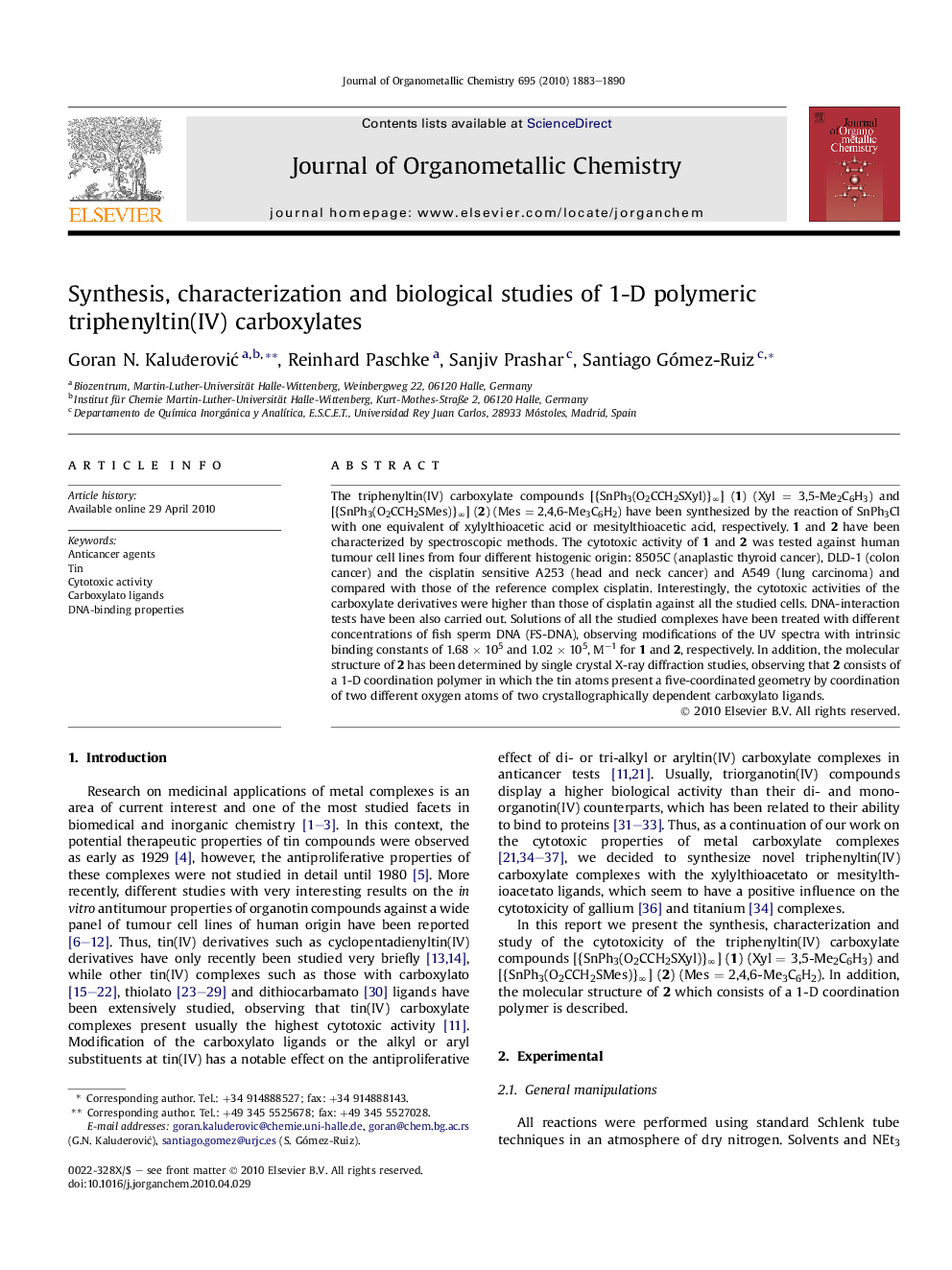| Article ID | Journal | Published Year | Pages | File Type |
|---|---|---|---|---|
| 1325726 | Journal of Organometallic Chemistry | 2010 | 8 Pages |
The triphenyltin(IV) carboxylate compounds [{SnPh3(O2CCH2SXyl)}∞] (1) (Xyl = 3,5-Me2C6H3) and [{SnPh3(O2CCH2SMes)}∞] (2) (Mes = 2,4,6-Me3C6H2) have been synthesized by the reaction of SnPh3Cl with one equivalent of xylylthioacetic acid or mesitylthioacetic acid, respectively. 1 and 2 have been characterized by spectroscopic methods. The cytotoxic activity of 1 and 2 was tested against human tumour cell lines from four different histogenic origin: 8505C (anaplastic thyroid cancer), DLD-1 (colon cancer) and the cisplatin sensitive A253 (head and neck cancer) and A549 (lung carcinoma) and compared with those of the reference complex cisplatin. Interestingly, the cytotoxic activities of the carboxylate derivatives were higher than those of cisplatin against all the studied cells. DNA-interaction tests have been also carried out. Solutions of all the studied complexes have been treated with different concentrations of fish sperm DNA (FS-DNA), observing modifications of the UV spectra with intrinsic binding constants of 1.68 × 105 and 1.02 × 105, M−1 for 1 and 2, respectively. In addition, the molecular structure of 2 has been determined by single crystal X-ray diffraction studies, observing that 2 consists of a 1-D coordination polymer in which the tin atoms present a five-coordinated geometry by coordination of two different oxygen atoms of two crystallographically dependent carboxylato ligands.
Graphical abstractThe cytotoxic activities against human cancer cells of new 1-D polymeric triphenyltin(IV) with the xylylthioacetato and mesitylthioacetato ligands have been tested. In addition, the binding behaviour of the organotin(IV) compounds to DNA helix has been studied by absorption spectral titrations.Figure optionsDownload full-size imageDownload as PowerPoint slide
